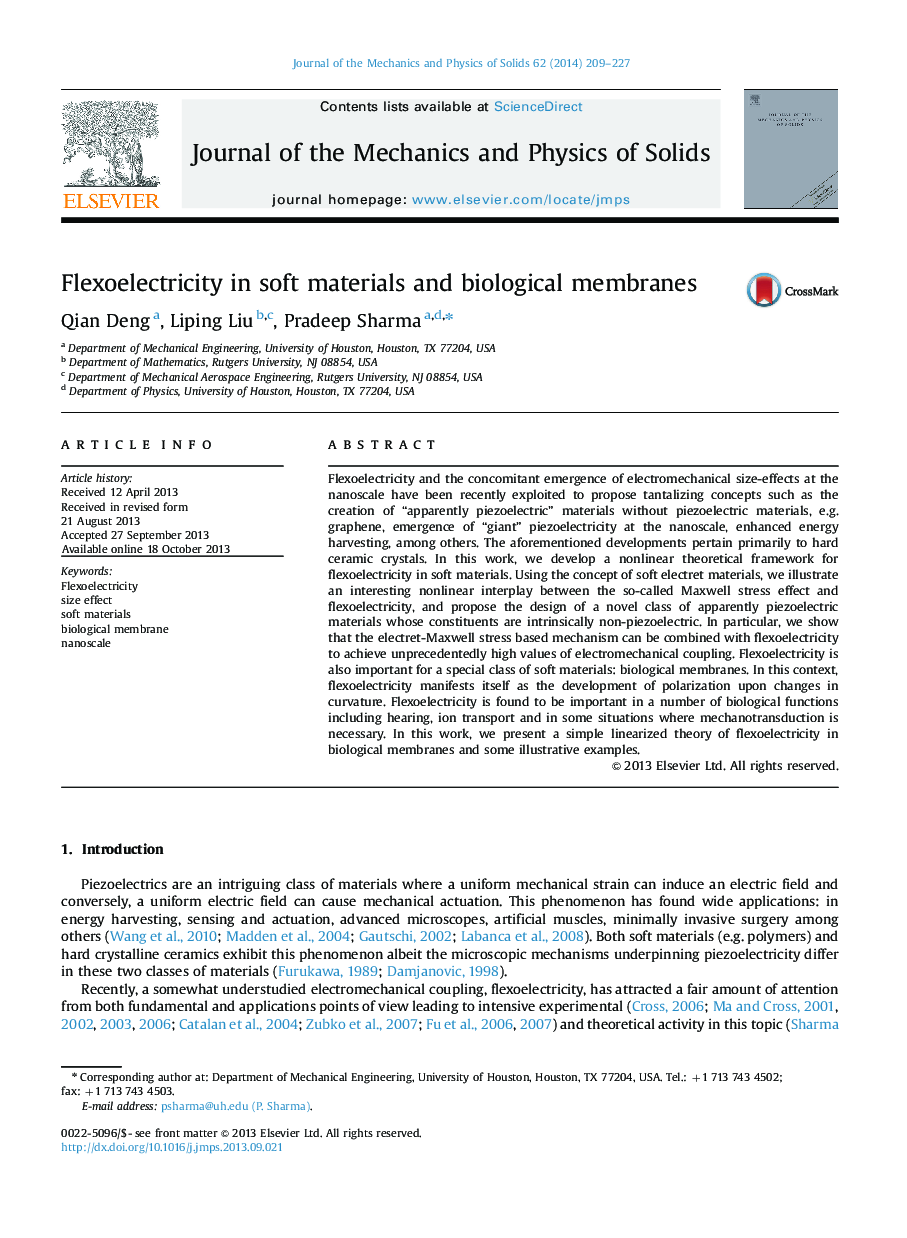| Article ID | Journal | Published Year | Pages | File Type |
|---|---|---|---|---|
| 796651 | Journal of the Mechanics and Physics of Solids | 2014 | 19 Pages |
Flexoelectricity and the concomitant emergence of electromechanical size-effects at the nanoscale have been recently exploited to propose tantalizing concepts such as the creation of “apparently piezoelectric” materials without piezoelectric materials, e.g. graphene, emergence of “giant” piezoelectricity at the nanoscale, enhanced energy harvesting, among others. The aforementioned developments pertain primarily to hard ceramic crystals. In this work, we develop a nonlinear theoretical framework for flexoelectricity in soft materials. Using the concept of soft electret materials, we illustrate an interesting nonlinear interplay between the so-called Maxwell stress effect and flexoelectricity, and propose the design of a novel class of apparently piezoelectric materials whose constituents are intrinsically non-piezoelectric. In particular, we show that the electret-Maxwell stress based mechanism can be combined with flexoelectricity to achieve unprecedentedly high values of electromechanical coupling. Flexoelectricity is also important for a special class of soft materials: biological membranes. In this context, flexoelectricity manifests itself as the development of polarization upon changes in curvature. Flexoelectricity is found to be important in a number of biological functions including hearing, ion transport and in some situations where mechanotransduction is necessary. In this work, we present a simple linearized theory of flexoelectricity in biological membranes and some illustrative examples.
